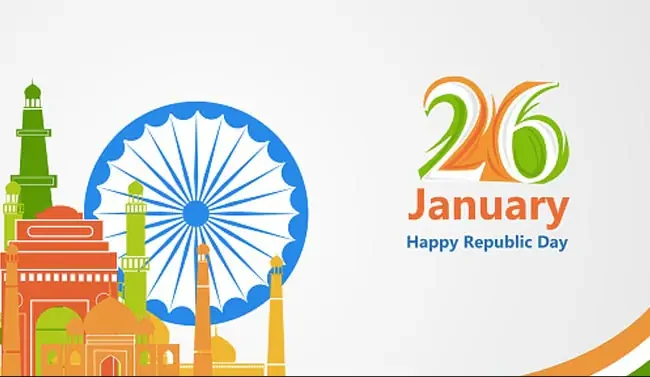Republic Day: India, a land of diverse cultures and rich heritage, celebrates three major national holidays every year—Republic Day, Independence Day, and Gandhi Jayanti. Among these, Republic Day, observed on January 26, holds special significance as it marks the day India became a sovereign, democratic republic. But why was this particular date chosen for such a historic occasion? Let’s explore the historical and symbolic importance of January 26.
The Historical Significance of January 26
The roots of celebrating Republic Day on January 26 date back to the early 20th century when India was fighting for its independence from British rule. The story begins with the Lahore Session of the Indian National Congress (INC) held in December 1929.
During this session, presided over by Pandit Jawaharlal Nehru, the INC passed a resolution demanding Purna Swaraj, or complete self-rule, for India. This was a decisive shift from earlier demands for dominion status. It was also decided that January 26, 1930, would be celebrated as Independence Day to emphasize India’s aspiration for freedom.
On this day in 1930, the nationalists and leaders across the country unfurled the tricolor flag, held rallies, and pledged their commitment to achieving full independence. Although India did not gain independence on this date, it became a symbol of resistance and determination for the Indian people.
The Transition to Republic Day
Fast forward to August 15, 1947—India finally achieved independence after a long and hard-fought struggle. However, even though India was free from British rule, it did not yet have a constitution of its own. Until then, the country was governed by the Government of India Act of 1935, a colonial-era document.
Recognizing the need for a constitution that would reflect the democratic aspirations of the people, the Constituent Assembly of India was formed. After nearly three years of deliberations, under the leadership of Dr. B.R. Ambedkar and other prominent leaders, the final draft of the Constitution of India was adopted on November 26, 1949.
The Constitution came into effect on January 26, 1950, officially making India a republic. The choice of January 26 was deliberate, as it paid tribute to the significance of the Purna Swaraj Declaration made two decades earlier. By doing so, the leaders of independent India ensured that this historic date was permanently etched in the nation’s memory.
The Significance of Being a Republic
The term “republic” signifies that the head of the state is elected and not a hereditary monarch, as was common in many nations during that era. On January 26, 1950, Dr. Rajendra Prasad took the oath as the first President of India, replacing the Governor-General as the ceremonial head of state. The day thus symbolizes the sovereignty of the Indian people, who have the power to govern themselves through elected representatives.
India’s Republic Day is a celebration of the principles of justice, liberty, equality, and fraternity as enshrined in the Constitution. It represents a break from colonial rule and the beginning of a new era where the people are the ultimate authority in shaping the nation’s destiny.
Celebrations and Traditions
Republic Day is celebrated with great enthusiasm and patriotic fervor across the country. The main event takes place in the national capital, New Delhi, where a grand parade is held at Rajpath (now renamed Kartavya Path). This parade showcases:
- The cultural diversity of India through tableaus from various states.
- The strength of the armed forces with military equipment and formations.
- Performances by schoolchildren and artists symbolizing unity in diversity.
The President of India, as the ceremonial head of state, unfurls the national flag and takes the salute. A significant aspect of the celebrations is the recognition of brave individuals with Gallantry Awards, including the Param Vir Chakra and Ashoka Chakra.
Conclusion: A Day of Pride and Reflection
Republic Day is more than just a national holiday; it is a reminder of India’s journey toward self-governance and the values enshrined in the Constitution. January 26 was chosen not only to commemorate the adoption of the Constitution but also to honor the historic struggle for Purna Swaraj that began in 1930.
As India celebrates Republic Day each year, it renews its commitment to uphold the ideals of democracy, unity, and inclusivity that form the bedrock of the nation. It is a day to reflect on the sacrifices made by countless freedom fighters and the responsibility of every citizen to contribute to building a prosperous and equitable India.
Read More: Best Headphones in 2025: Sway to the Tunes with the Top 8 Picks

